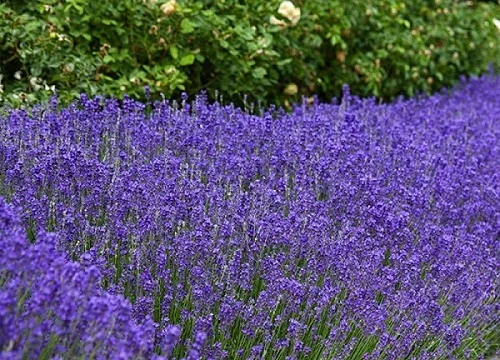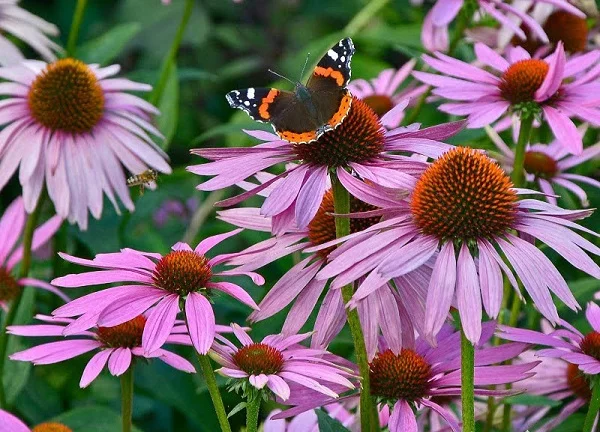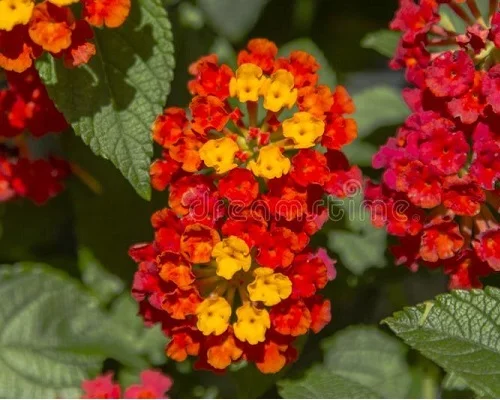Salvia nemorosa Care | How to Grow and Care for Woodland Sage (Balkan Clary)
Some links in this post may be affiliate links
Salvia nemorosa commonly called Woodland Sage, Meadow Sage or Balkan Clary is an erect, perennial, drought-tolerant, clumping plant with square stems and narrow, velvety green leaves.
Meadow Sage belongs to the Lamiaceae (Mint) family together with Lavender, Rosemary, Thyme, Basil, Catnip and Bee Balm among others. Many of these plants are aromatic and are used for culinary purposes while others have medicinal uses.
Balkan Clary was named and described by Carl Linnaeus in 1762 where the name 'nemorosa' (of woods) is in reference to its habitat in groves and woods.
The name 'Salvia' derives from Latin salvia (sage), from salvus which means safe, secure, healthy and is related to salūs (health, well-being, prosperity or salvation), and salvēre (to feel healthy, to heal). This implies that Woodland Sage has medicinal uses.
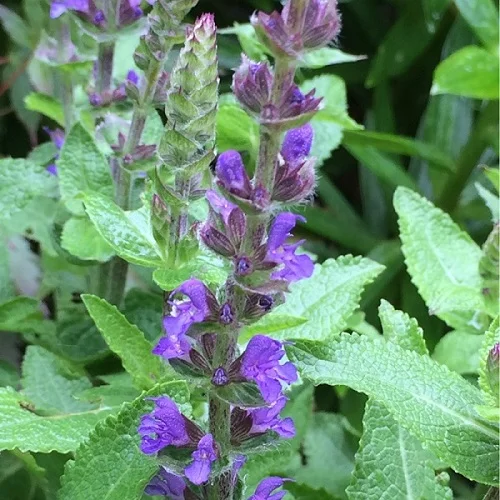
Botanical name: Salvia nemorosa
Family: Lamiaceae
Common names: Woodland Sage, Balkan Clary, Meadow Sage, Wild Sage
Origin
Salvia nemorosa is native to the hot, dry climates in Central Europe and Western Asia. It is ideal for USDA Hardiness Zones 4-8.
Size
Woodland Sage size ranges from 1-4 feet high and 1-3 feet wide in 2-5 years.
Flowers
The inflorescence in Balkan Clary are flower spikes in shades of blue, dark purple, lavender, red, pink, white and yellow. The blooms appear in late spring to fall. The flowers are attractive to butterflies, bees and hummingbirds.
Cultivars
Woodland Sage easily hybridizes into many cultivars and hybrids. Many of the plants grown nowadays are hybrids which are more hardy than the mother plants. The commonly recognized cultivars include Amethyst, Lubecca, Caradonna, Blue Hill, May Night, Viola Klose among many others.
Medicinal Uses
Salvia nemorosa has been used to treat diarrhea and hemorrhages. The leaves are applied externally to stop bleeding.
Salvia nemorosa (Woodland Sage) Care
Woodland Sage thrives in full sun with at least 6-8 hours of sunshine per day, warm, dry conditions and well-drained soil that is moderately rich in organic matter to promote lush growth and flowering.
Salvia nemorosa requires timely pruning to keep the plant neat, to control growth, to encourage flowering and to minimize pest and disease infestations as it improves aeration.
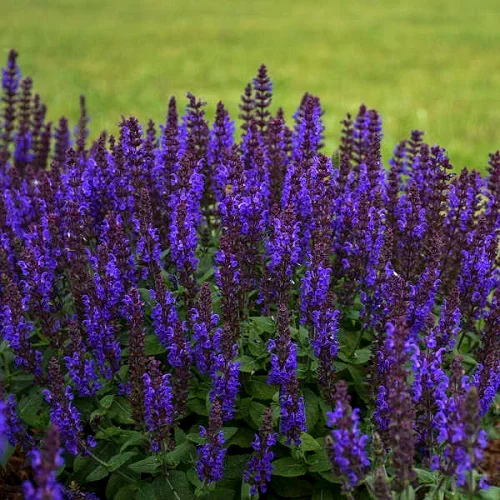
Light Requirements
Woodland Sage requires full sun with at least 6-8 hours of sunshine per day through out the growing season to encourage blooming. It can tolerate some shade but too much shade will cause the plants to become floppy and it may also encourage powdery mildew infestations.
Water Requirements
In the early stages after planting, water the young Woodland Sage regularly to maintain the soil moist until the plants are well established.
Once established, it is fairly drought-tolerant and will not require very frequent watering. Water the established plants moderately during the growing season while allowing the soil dry out between waterings.
Temperature and Humidity
Woodland Sages can withstand a wide range of temperatures down to -180C. Avoid growing the plant in wet, rainy areas as damp air will encourage fungal disease infestations.
Fertilizer (Feeding)
Feed Woodland Sage with a light application of a balanced, water-soluble fertilizer in early spring. This feeding should be adequate and no more feeding is required. Avoid excessive feeding as it may result in vegetative growth at the expense of flower production.
Soil
The best soil for Woodland Sage should be loamy soil, moderately rich in organic matter and one that drains easily to prevent it from holding excess water. It grows best in slightly acidic to slightly alkaline soil PH. Cover the soil with a mulch to keep the soil moisture and temperature constant.
Where to Buy Woodland Sage
Woodland Sages plants and seeds are available online on Etsy (Link to Etsy).
Starting Woodland Sage Seeds
Indoors, start the Meadow Sage seeds at least 6-8 weeks before the last frost. Sow the seeds about 1/4 inch deep and cover lightly with soil. Germination should occur in 1-2 weeks.
Where to Plant Woodland Sages
Plant Woodland Sage along walkways and garden paths as they beautifully spill over to soften the edges. It can also be planted in mass borders, in flowerbeds and groupings.
When to Plant Woodland Sage in the Ground
The best time to plant Woodland Sage in the ground is in spring after the threat of frost has passed and the soil has warmed up enough.
Planting Woodland Sage in the Ground
Dig up the soil to a depth of about 10-12 inches to loosen it and get rid of all the weeds and other debris from the soil.
Prepare planting holes twice as wide as the rootballs. Incorporate a handful of fully decomposed organic manure per hole.
Plant the Woodland Sage at the same depth as they were in their pot. Firm the soil around the root ball lightly.
Thoroughly water the plants and maintain the soil moist until the plants are well established. Thereafter, water moderately while allowing the soil to dry out between waterings.
Apply a thin layer of compost on the soil surface and then a mulch to keep the soil moist and discourage growth of weeds.
Repotting Container-grown Woodland Sage
Where the conditions are not favourable for growing Woodland Sage in the ground like in areas with harsh winters, you can grow Woodland Sage in containers.
Doing so allows you to move the plants to sunny spots during summer for the much needed sunlight and indoors next to a sunny window when the conditions are harsh in winter.
Repot at the beginning of the growing season (spring). Use a pot that is large enough to accomodate the roots.
Confirm that the container has adequate drainage holes to prevent the soil from getting soggy to prevent root-rot and eventual loss of the plant.
Select a clay or terracotta pot rather than a plastic or ceramic pot as a clay pot is porous and allows the soil to dry out faster to keep it from staying wet for too long.
Slip the plant out of its nursery pot and place it in the center of the container at the same soil level as it was in the previous pot and back fill with fresh, loamy soil that is rich in organic matter.
Do not fill the pot completely but allow a space of about 1 inch from the rim for watering purposes to avoid spillage.
Wet the soil thoroughly until water comes out through the drainage hole(s). Thereafter, water moderately during the growing season when the top 2-3 inches of soil dry out. Reduce watering in the cold season (winter).
Pruning Woodland Sage
Pruning Woodland Sage involves cutting back the stems to ground level once flowering is over to overwinter the plants. Remove the spent flowers to keep the plant neat, to discourage pest and disease infestations as well as encourage more blooms and prevent self seeding.
Cut back the stalk to the base. Use a sharp, sterilized scissors to minimize unnecessary injury and transmission of fungal diseases. However, for reseeding purposes, allow some flowerheads to seed. This will also provide food for the birds.
Propagation
Woodland Sage (Salvia nemorosa) can be propagated by plant division at the beginning of the growing season (spring) or in fall after flowering.
How to propagate Woodland Sage by Plant Division
With age, Woodland Sage become overcrowded and root-bound which decreases flowering. To keep the plants vigour, divide them every 4-5 years.
Carefully dig up the plants and split the clumps into several sections while ensuring that each section has adequate roots to hasten establishment.
Plant these sections in individual holes at the same depth that they were previously to avoid rotting and death of the plant.
Water the new plants thoroughly and maintain the soil moist through out until they are well-established after which you can begin routine care.
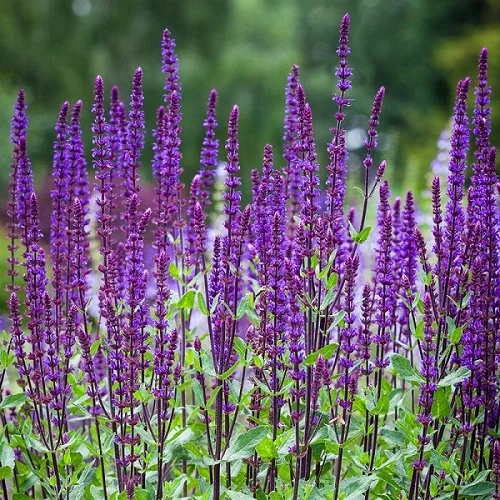
Woodland Sage Problems
Woodland Sage (Salvia nemorosa) is a hardy plant and has few problems, some of which include floppy plants, diseases and pests.
Floppy Plants
Floppy Woodland Sage plants are caused by too much water, overfertilizing and or inadequate sunlight. Avoid overwatering by watering the plants only when the top 2-3 inches of soil dry out.
Ensure that the plants receive at least 6-8 hours of sunlight daily during the growing season. Do not overfeed, feed it only once in early spring with a light balanced fertilizer.
Provide support for floppy plants and or deadhead the flowers to reduce the weight to prevent bending.
Diseases
Common diseases in Woodland Sage include;
- Leaf Spot: Appears as small circular spots on the leaves and is prevalent in poorly aerated, overdamp conditions.
- Powdery mildew: Appears as white or gray powder-like substance on the leaves and the stems. It is prevalent in damp, poorly ventilated conditions.
- Root-rot: Which is common in container-grown plants and plants grown in poorly drained soils as soggy soil enhances the growth of the causative fungi.
Do not overwater the plants or let them sit in soggy soil. Ensure that the soil is free-draining and water only when the soil has dried out.
For container-grown plants, make sure that the container has adequate drainage holes and that the soil is drains easily.
Avoid overcrowding of the plants and also prune some of the branches to improve the ventilation and ensure that there is good air circulation at all times.
Avoid overwatering and ensure that the soil is well-drained. Do not wet the foliage during watering and make sure that there is good air circulation. Position the plant in a sunny spot where it will receive 6-8 hours of sunshine daily.
For container-grown plants; Take out the plant from its pot and inspect the roots. Mushy brown-black roots are indicative of root-rot. Cut away the infected roots. Spray the healthy roots and the entire plant with a copper-based fungicidal solution.
Repot the plant in a fresh pot and fresh, well-drained soil. Ensure that the pot has adequate drainage holes. Position the plant in a sunny spot. Do not water and keep the soil dry for a few days.
For plants grown in the ground; Uproot and destroy the affected plant. Dig up the surrounding soil and discard it. Spray the surrounding soil with a copper-based fungicidal solution to minimize spread of the disease to the rest of the plants.
Pests
Common pests in Woodland Sage are snails, slugs and caterpillars. Spray the plant with an insecticidal soap or neem oil as directed by the manufacturers.
You liked it? Share on social media.
Related Content
Amazon Associates Disclosure
Homeplantsguide.com is a participant in the Amazon Services LLC Associates Program, an affiliate advertising program designed to provide a means for sites to earn advertising fees by advertising and linking to amazon.com.
